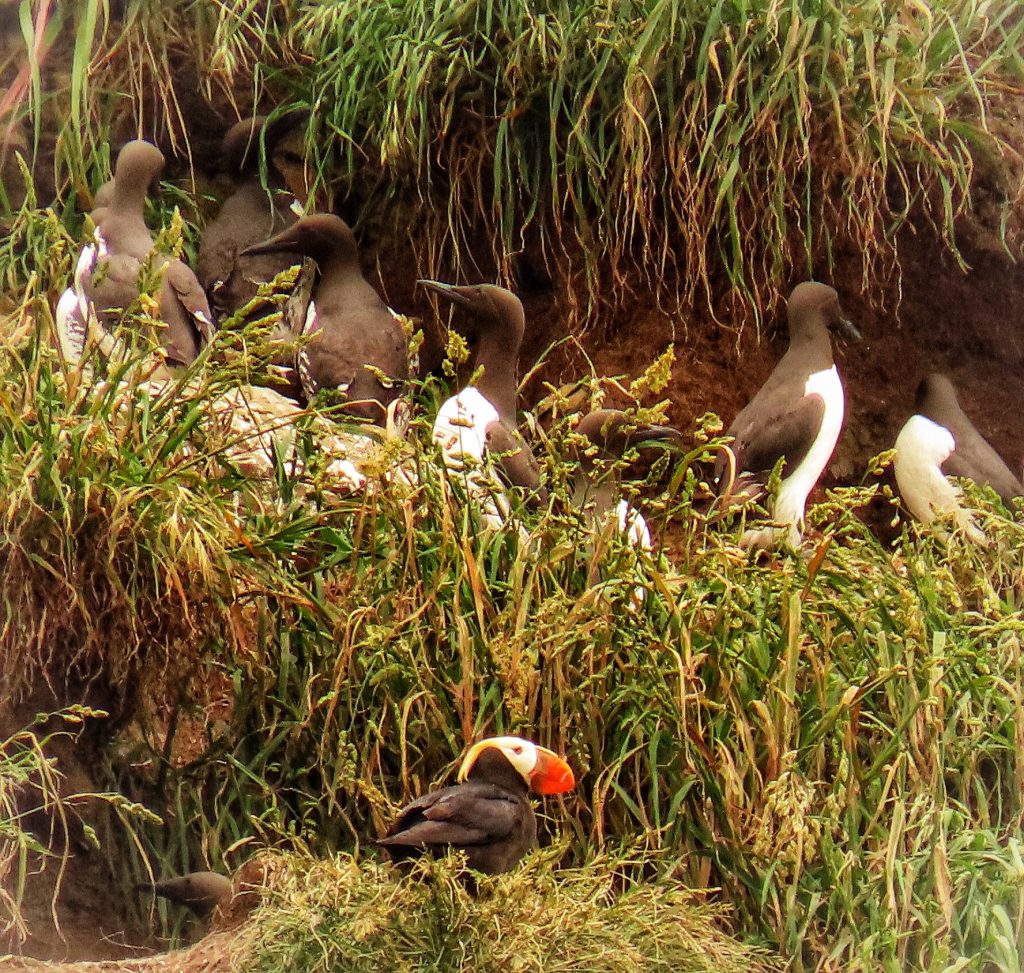
Text of a presentation given to the Scarab Society on September 27, 2021
Hi Everybody! My name is Dan Nelson, and I’ve got a project/website called 10,000 things of the Pacific Northwest, and tonight I’ll be talking about that project and what led me to undertake it, although I’m not really sure what possessed Sharon Collman to ask me to do a presentation to you fine folks in the first place. I have no groundbreaking research to report, and whatever I do know is contained in the species profiles on the website. I’m not being modest when I say that I’m sure I’m the least biologically/ecologically knowledgeable person in attendance tonight. My formal higher education consists of 3 community college courses in my early 30s, none of which had anything to do with biology, and I never went back for a second quarter, although the fantasy had been to get a degree in fisheries biology. But it turned out I wasn’t one of those ambitious people who could juggle full time school, full time job, full time family man, and chemical dependency all at the same time. And thus ended the formal part of my education.
There is a parallel here as to why I think I was asked to speak to you all tonight. I chose fisheries biology because I was passionate about fish. And fishing too, of course. Man, I loved to fish! During my second marriage I almost bought a bumper sticker that said ‘My wife says if I go fishing one more time she’s gonna leave me. Boy, I’m gonna miss her!’ But I didn’t, because I figured that that would hit a little to close to home. The thing about fishing that struck such a deep chord was making contact with these amazing beings that lived in a hidden and inaccessible environment. As an adult I fished almost exclusively for anadromous species, because I was (and still am) rather in awe of the life cycle that’d leads them to travel down creeks and streams and rivers to the broad expanse of the ocean, then forage far and wide in its vastness, only to find their way back to their point of departure from freshwater, and to navigate the river and stream and creek to their birthplace, to spawn and, in the case of the salmon, die, with the nutrients of their bodies, containing the bounty of the sea, nourishing the watersheds of their birth and, ultimately, feeding the lifeforms that will feed their young.
The parallel to why I believe I’m here to talk to you tonight is that, after many detours, I bring that same passion, no longer colored by a harvest mentality and much broader in scope, to the avocation of being a recreational naturalist. Simply put, I love this stuff! There is so much to learn and so much to see, and I will never run out of wonders to behold. I am in no way religious, but I find in the interrelationships of nature a call to the spiritual, and the website is a place where I can be benignly evangelical in advocating for respect and admiration for the wild lifeforms with which we share the planet. And what I lack in present knowledge I hope to make up for with a seemingly boundless curiosity about the identification, natural history, and relationships amongst the lifeforms of our area, coupled with a wide and ever increasing range of both online and print resources, and a certain level of investigative tenacity that comes pretty darn naturally.

A few words about my website, or to be more accurate, the project that I’m documenting on my website. The goal here is to find, photograph, identify, and profile at least 10,000 species of the myriad, a word from the Greek myrioi meaning 10,000 or innumerable, the myriad lifeforms to be found in the Pacific Northwest, a project that I expect to last at least the next 15 to 20 years. And just as the Chinese term ‘the 10,000 things’ was used to denote the multiplicity of forms and beings in the world, without being an accurate representation of their true number, my goal of finding 10,000 things does not reflect the actual number of lifeforms extant in the Pacific Northwest, which is undoubtedly several times that number. But it should cover many of the species one might encounter here. The hope is that folks will eventually be able to use this site as a field guide to a wide variety of the wild things to be found in the PNW.
For the purposes of this project the Pacific Northwest is defined as that area bordered on the west by the Pacific Ocean, on the east by the Continental Divide, on the south by the south slope of the Siskiyou Mtns, and on the north by the Fraser River in British Columbia. There is a gray area to the east of the Siskiyous, but I plan to include all of Oregon, Idaho, and Washington, as well as far western Montana, southern BC, far northern California, and to exclude all of Nevada, except for border adjacent areas where I can see parts of Oregon and Idaho that are more or less on the same plane. I recognize these are somewhat arbitrary boundaries, but I have to put some kind of limits on this. And, though strict climatological logic would probably set the southern limit at the crest of the Siskiyous, the south slope is someplace I’ve always wanted to explore and it is, after all, my project.
Another caveat regarding inclusiveness is that this project is about wild lifeforms. That means nothing planted, stocked, or released by humans. However volunteer garden plants that have become naturalized, like some populations of Sweet Williams, Hyacinths, and Daffodils that I’ve seen, will be included, and exceptions may be made for restoration areas where there is some natural reproduction. Any animals you see posted here will have been, to the best of my knowledge, born in the environment in which I found them, although I may have to make an exception for potentially hatchery birthed anadromous fish, since, for the most part, it is illegal to remove the wild ones from the water.
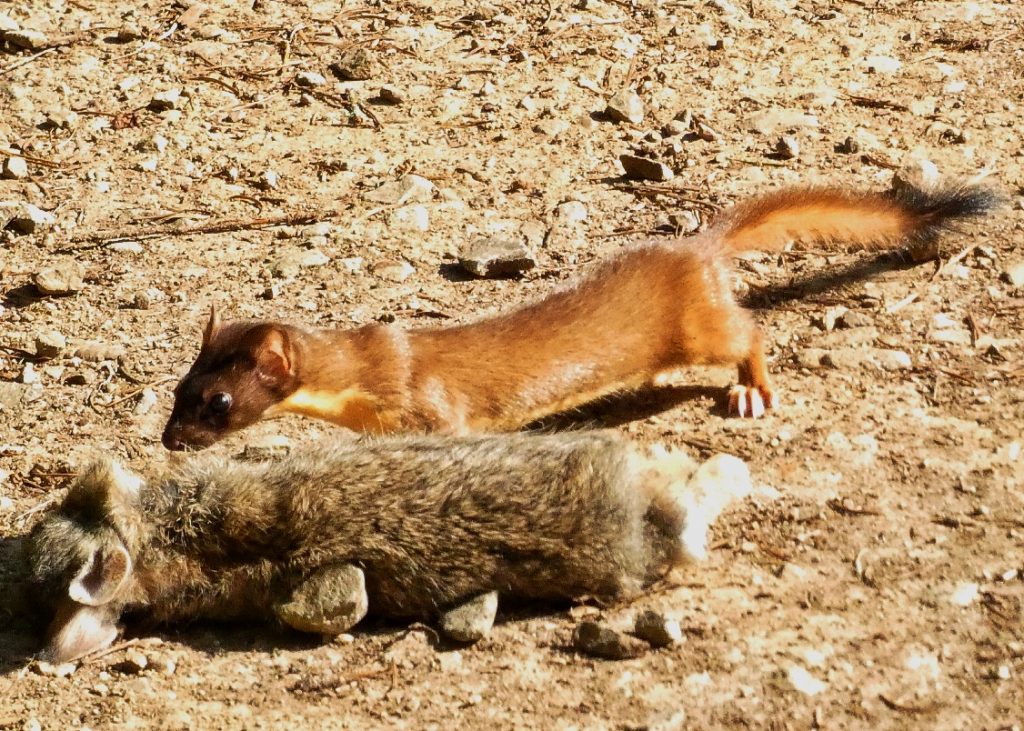
Just to reiterate, I am no expert! But I have come to know quite a few experts over the last several years, brilliant women and men who volunteer their knowledge in an effort to help keep me on the rails in these posts. These fine folks correct (and even occasionally confirm) my identifications. And sometimes they tell me that this bug or that moss cannot be identified by my photos. But do I perchance have a picture of the metatarsal claw, or the mesosternal plate, or the alar cells? Which is why I occasionally do collect specimens, some of which, in the case of invertebrates, I euthanize in a freezer and then pin. Because I want very much to be accurate when I say that such and such creature is called so and so. I don’t really like killing bugs, but I keep it to a minimum, and I don’t lose any sleep over it. And the majority of specimens I collect are ‘chilled out’ in a small refrigerator I bought for this purpose, which often allows me to get photographs with enough detail to be sufficient for identification, after which they can be released.
Another thing I need to mention is that, even ignoring the impossibility of a website without a web, for a non-academic such as myself this project would not be possible without the Internet. Their are many negative things about the Internet, especially as concerns the dissemination of misinformation and the crapfest of much of social media, but boy howdy, there is access to a truly incredible amount of information. Now don’t get me wrong, I think books are great! I love everything about actual, physical books, and I own about 1500, though well over half of them are fiction and literature. But they are not searchable the way the Internet is, although I’ve been acquiring more PDFs and e-books for that very reason. And, while I frequently bemoan my inability to access research materials because of my lack of academic credentials, still the ability to search the literature of the world for obscure or arcane information made freely available by the generosity and communal, democratic spirit of scientists and lay people alike, is astonishing, heartwarming, and incredibly valuable. Whether I utilize it or not, I thank every person or institution that practices an open access policy, and I hope I am contributing to that ethos by having a free, non-commercial, no advertisement website where people can share the fruits of my passion.
As I’ve said, I came to this obsession in a roundabout way. I have always preferred being outdoors to indoors, but during my childhood in urban southern California that manifested primarily in playing a lot of sports. However there were also trips into the desert with my father, where the occasional tortoises and lizards, and the wildly surreal cacti, only added to the joyous freedom of so much space unmarred by buildings and concrete.
I also have vivid memories of my third grade teacher leading us into an open area at the base of some hills near our school, where there was a stock tank that overflowed to form a tiny wetland. I have no idea what species they were, or even if they were considered to be toads rather than frogs, but there were hundreds of these dark little Anura ranging from tadpoles 1/4” long to nearly tailless, mostly metamorphosed ones that were still less than an inch long. The fact that those little creatures wriggling underwater could become these creatures hopping on the ground simply inflamed my little mind, and I remember babbling on and on about it that evening to my parents and sister.
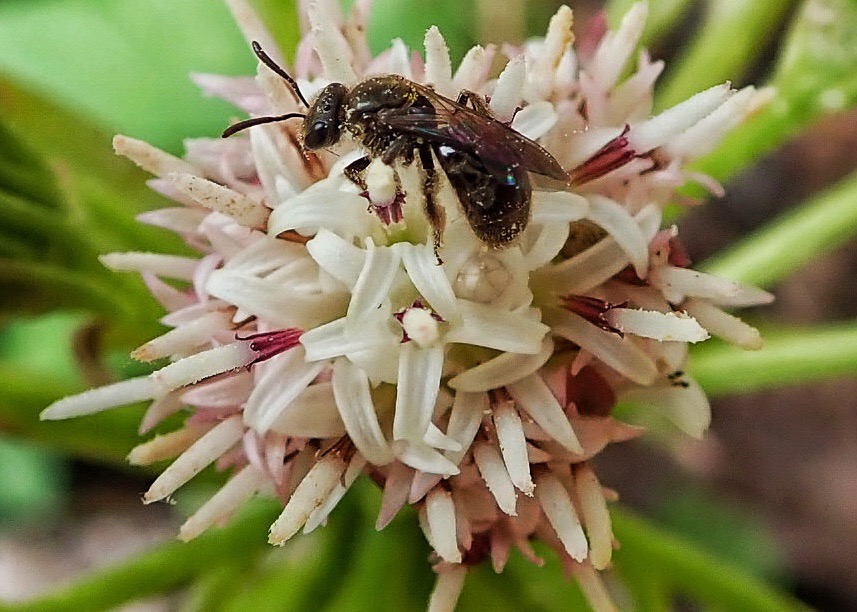
When I was 11 we moved to Montana where I became interested in hunting and fishing. Captivated by tales of the mountain men, and hardened by the hormonal insanity of puberty, I viewed the natural world as a larder, and the ability to ‘triumph over the wilderness’ and ‘live off the land’ became my highest ideal. This callow and shortsighted view of nature came with me when we moved to Vancouver in the mid 70s, and I added trapping to my bloody hobbies.
The seeds of this avocation were first sown over 40 years ago when I went to work for the Young Adult Conservation Corps on the Ridgefield National Wildlife Refuge, and met my best and oldest friend, Craig Sondergaard. Anyone who peruses my site for long will see him mentioned many times, and it’s safe to say that I wouldn’t be doing this project without his influence. Craig is the best general amateur naturalist I know, with a library, and an insect collection, that would be the envy of many a community college biology department, and he was, even then, a very good naturalist. He tried to teach me things, and I was a willing student, but I was partying far too much to have the focus, discipline, detail orientation, and mental acuity necessary for the obsession to bloom. But the seeds did germinate.
The main thing that I gained from that first six months at the refuge under Craig’s tutelage was an appreciation for the abundance and diversity of life beyond the mammals and gamefish that I had been focusing on. He introduced me to the amazing worlds to be found under logs and rocks. And Craig knew what the things were that we found under those chunks of cover. Knowing now how cautious he is about naming something to species I’m sure the Latin rolling off his tongue was generic or familial names, but they were just mostly indistinguishable bugs to me, so I was properly amazed.
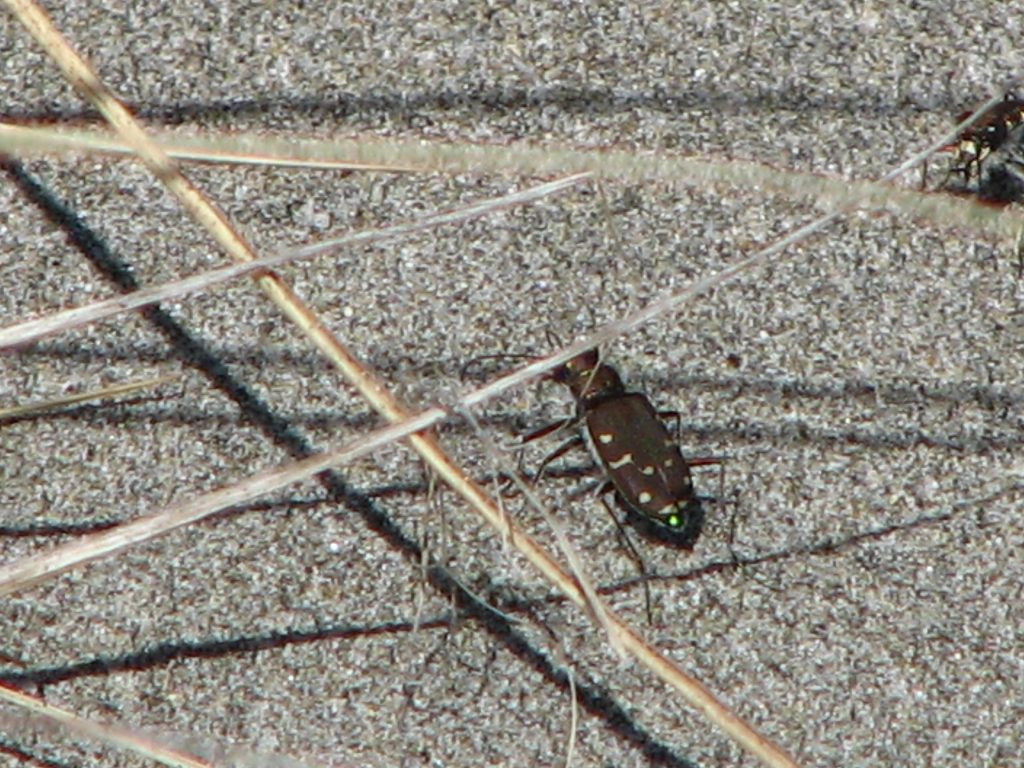
Craig also introduced me to dichotomous keys, and one of my first experiences of using one came when we attempted to key out some sculpins. But first we had to catch them! Stalking them as though they were trophy gamefish we belly crawled along the grassy bank of a feeder creek of Lake River until we spotted a few in a shallow, sunlit pool. After a period of observation in this wild aquarium we dropped our tiny baited egg hooks upstream of them, gently jigging them to float them closer too our quarry. Finally a take, a strike, and the wriggling creature was swung into our bucket. Traipsing back to the car I was as proud of, and thrilled by, that trio of sculpins as I had ever been by any stringer of fish.
The identification process was not overly complicated in the first several couplets, although it involved some extended time in a glossary because of terminology that even Craig wasn’t completely familiar with, and some very close observation. But eventually it came down to some traits that were rather ambiguous, and though I do not recall what we settled on, I’ll never forget the delighted kinship I felt for the sense of humor of some unknown ichthyologists when I realized that we either had Cottus perplexus or Cottus confusus.
When I got a promotion and went to work for US Fish and Wildlife as a construction inspector at Lower Klamath National Wildlife Refuge outside of Klamath Falls I purchased some field guides to take with me, and I spent many hours that winter traipsing about the refuge, looking under rocks, and finding a fair number of scorpions, beetles, and spiders. But I was seldom able to figure out what I was looking at, and I’d usually go back to trying to find mammals and large birds.
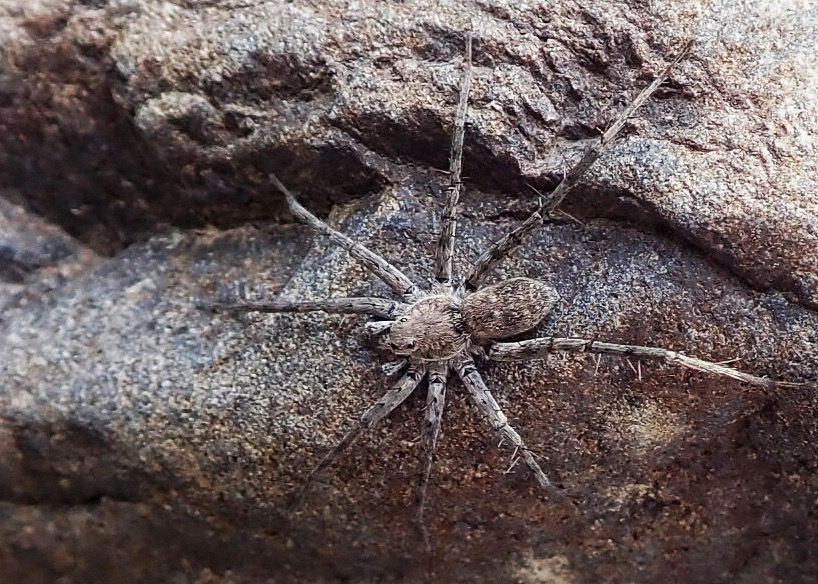
One of the sights that most quickened my pulse was seeing over 200 Bald Eagles hanging out on the frozen surface of a pond. This was in 1981 and Bald Eagles were still severely imperiled, though their numbers were rebounding, and I’d only ever seen a handful. I didn’t actually think to count them, but the refuge biologist had, and though I don’t remember the actual number, I do remember him saying that it was probably about 10% of the Bald Eagles in the lower 48, all in the middle of that 30 acre pond. The thing I remember most is that the majority of them were very still. There was a little movement at the periphery, but all of them were silent, simply standing there on the ice in a long oval formation. They were not bunched up, but neither were they very far apart. There was a dignity about them, as well as an intense watchfulness, as though they were waiting for something important to happen.
I had many great wildlife moments while working down there, including watching mule deer bucks in rut engaging in primordial battles, and getting pronghorns to approach within 25 yards of the ditch I was hiding in by slowly waving a stick with a red bandana tied to it. But the most viscerally effecting wildlife experience I had down there also involved an eagle, albeit a Golden Eagle on this occasion.
I was driving a paved backroad between the refuge and the town of Doris, California, when I came around a corner and saw someone standing in the road a half mile or so away. As I closed the gap I began to realize it was not a person, and when I was a few hundred yards away I came to the conclusion that it was an eagle. I slowed way down, expecting it to fly, but it just kept watching me, with one set of talons on the yellow line, and one set clenched around a dead rabbit. The last 30 yards I was barely moving, and I rolled down the window and inched over to the shoulderless road edge to see it better. As I drew even with it and was about to stop I was within a few feet of it and could see every feather of its majestic glory. I was awestruck by its fearlessness, and then terrified when it screamed at me, suddenly thinking how foolish I was to have removed that pane of glass from between me and this fierce predator that seemed willing to fight to the death to protect its meal. In retrospect I believe I mistook defensiveness for aggression, and that it wouldn’t have made any sense for the bird to attack me unless I actively tried to steal its meal. Trying not to startle it I kept inching past whilst rolling the window back up. When my rear bumper was 15 feet or so past the bird, it bent in and started tearing strips of flesh from the rabbit.
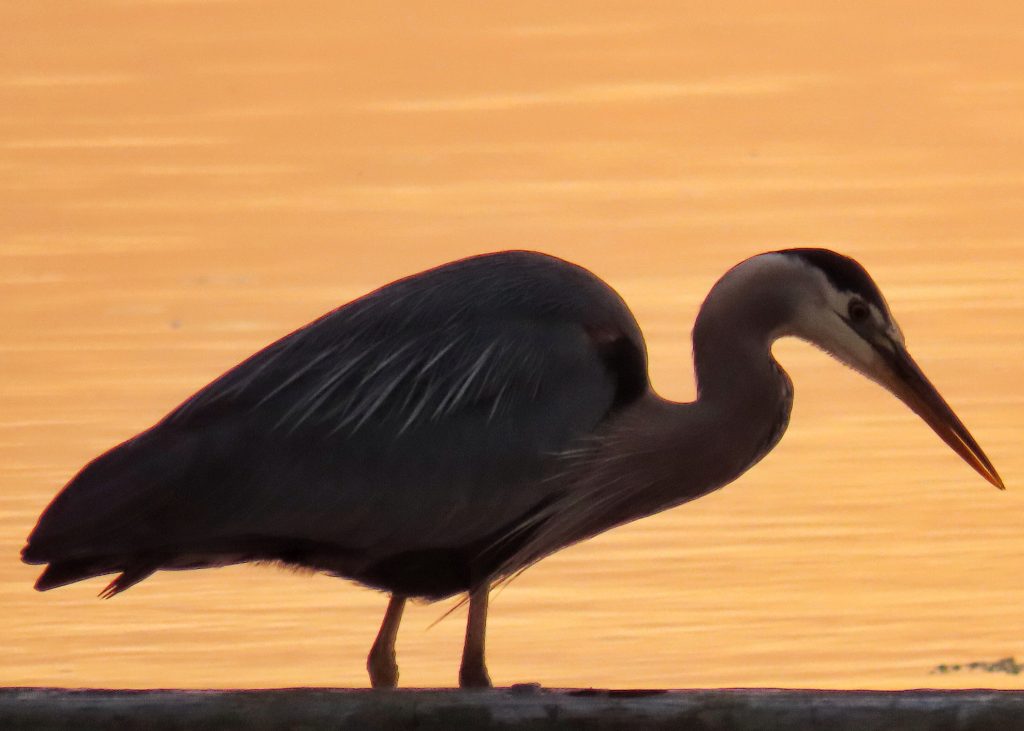
The birders amongst you may wonder how I know it was a Golden Eagle, as did the refuge biologist to whom I told the story, and I must admit that I just assumed that it was in my ignorance of immature forms. But the lack of white on the breast area and the golden brown nape convinced him, and therefore me, that it was indeed a Golden Eagle.
In my 20s I became too tender hearted to kill wild things for sport or economic remuneration, although I still practiced catch and mostly release fishing. I say ‘wild things’ because I was at that time employed as a butcher, and my job was to go to people’s farms and slaughter and dress out the appropriate livestock, primarily beef and pork. My boss did the shooting, and most of the shooting of the bull, while I did most of the grunt work, a job I was well suited for because I’m fairly immune to gore, and had already dressed many an animal by that point in my life. I didn’t find it horrifying, and, being an omnivore, I didn’t find it morally repugnant. Just as I don’t find hunting for meat, or trapping fur bearers to provide clothing for one and ones family, to be morally repugnant, although it seems to me that many hunters and trappers approach their task with much less respect for the animal and it’s life than I feel is appropriate. But dealing with that much death conversely engendered a real valuing of life in me, and I could no longer justify participating in those blood sports.
However, the absence of those activities left a void in my life, and I soon developed a keen interest in rock climbing, alcohol, and recreational drugs. For several years my obsession with rock climbing provided a pivot around which my life swung. Though it was still a sport of conquest and triumph, in the process I was able to visit and explore some of the most beautiful places in North America, and on my better and more joyful days I danced with the rock rather than trying to conquer it. I learned much about pragmatism and acceptance while climbing, because what is there is just there, and what ain’t just ain’t. Immediate reality is precisely defined on a rock face, and fantasies just siphon energy. Although, unfortunately but not surprisingly, I almost completely failed to generalize that lesson to the vicissitudes of life.
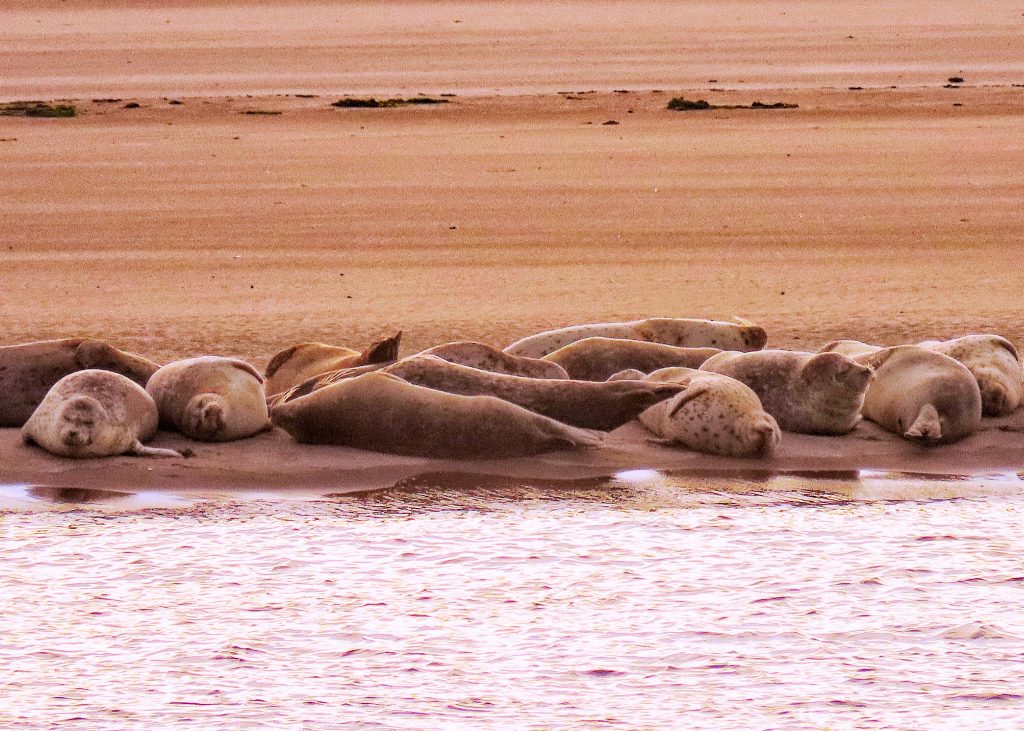
Then, rather abruptly after a winter wherein it became crystal clear to me that I’d reached the limits of my ability to climb, limits that fell far short of the lofty, world class goals I had set for myself, I quit rock climbing. And, as these things often go on a rebound, shortly thereafter I found myself with a wife and a child, and a job I hated, and a small troop of monkeys on my back.
This was the period when I became rather obsessive about fishing for anadromous salmonids, and I also did a large amount of camping, mostly just with my kids, being as my serial wives quickly grew weary of the rigors I imposed on a camping trip in the name of roughing it. I managed to learn a few broad classes of wild edibles such as miners lettuce and wood sorrel, and I learned to distinguish the dangerous baneberry so that we didn’t mistakenly collect any in our otherwise rather random and indiscriminate harvest of other, safer, albeit sometimes insipid or downright distasteful berries. But that was as far as my botanizing went, and eventually camping with my kids was also lost in the black hole of my addictions.
Finally, in 2009, I got clean and sober, and met the love of my life, my wife Pam. We often went hiking, and because I professed extensive experience in, and a love of, the outdoors Pam would often ask me what this plant or that bird was. And I was embarrassed to admit that most of the time I had no idea.
Then came a frigid February morning and our first trip to Catherine Creek Recreation Area, on the Washington side of the Columbia River Gorge a few miles east of Bingen. It was really an accident that we ended up there, since we were just exploring. But what we found changed my life- Wildflowers blooming on a 38⁰ morning in February. I had no idea such a thing was possible! And by the time I had identified them as Olsynium douglasii (Grass Widows) and Lomatium columbianum (Columbia Desert Parsley), having spent hours in the library poring over hundreds of wildflower photos since I was so clueless I didn’t even know where to start, I was hooked. This was the thing I could do to fill those spaces formerly occupied by drugs and alcohol, that craving to be passionately excited about learning and exploring. This could bring back the anticipation and focus and joy I found in those long ago mornings of trapping, hunting, and fishing. This could be the thing to which I devoted my life. And so it has been. I’ve been trying to find wild lifeforms and learn about their natural history ever since.
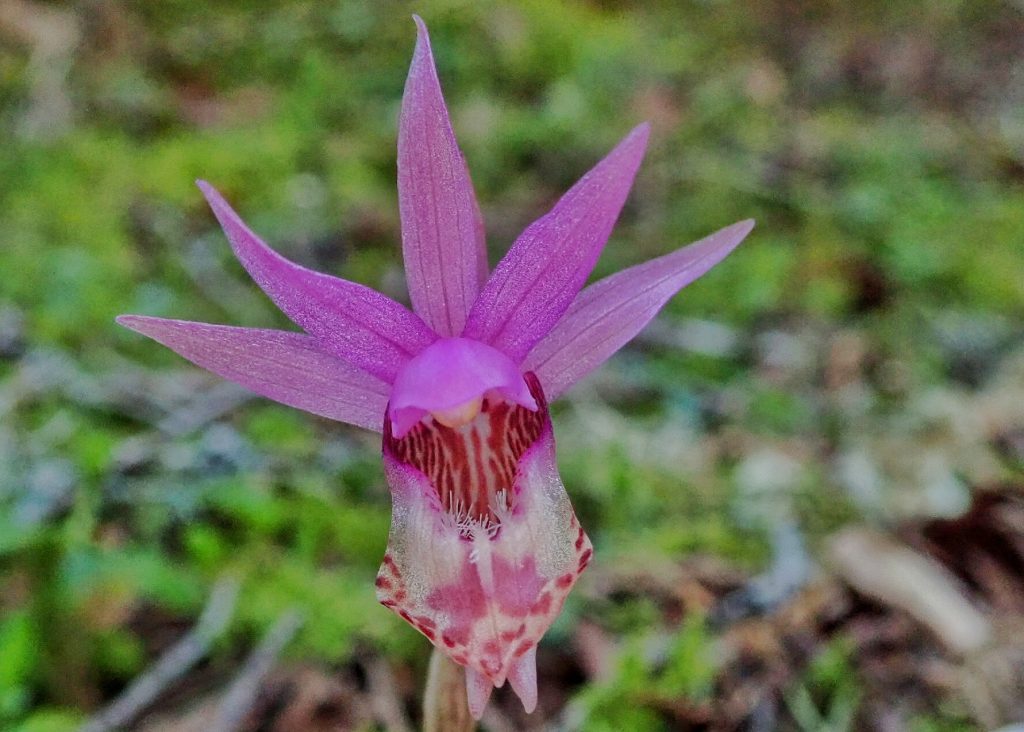
This is probably a good place to define what I mean by the term ‘recreational naturalist’. I like to think that I coined this phrase, but it seems such an obvious designation that I’d actually guess that someone has used it before. Possibly I’ve even read it somewhere, and that’s why it popped so easily into my mind. Even leaving out the googolplex of words spoken by humans over the course of time, the simple fact is that after reading roughly 4,000 books in my lifetime (although the first couple thousand were predominantly westerns, sci-fi, detective stories, and other works of pulp fiction that I read while a school kid, when I read constantly and often finished more than a book a day) it’s probably not possible for me to say anything that is truly original in phrasing, and probably content. If it’s not outright plagiarism then it’s at least paraphrased from some greater mind. But I digress. My definition of a recreational naturalist is one who investigates the components and relationships of the natural world for fun. Although I must admit that, when in the throes of a particularly tricky identification, I have a tendency to forget that this is supposed to be fun. The reason for using recreational naturalist rather than amateur naturalist is that many amateur naturalists have been truly great scientists, and I’m not. My friend Craig Sondergaard is an ameteur naturalist because he is, in thought, deed, and outlook, a scientist. I don’t have the diligence, patience, inclination, or disposition to be a scientist. I love science, admire scientists, and am very grateful for their efforts, exploration, and exposition of information, but I do not aspire to be one of them, at least not this late in the game. I’m just a guy who loves being outdoors and finally realized it would be very interesting to know what I’m looking at and how it fits together.
That first spring after finding the grass widows and Columbia desert parsley I spent a lot of time identifying wildflowers. I bought Turner and Gustafson’s ‘Wildflowers of the Pacific Northwest’, and it became my bible, a dont-leave-home-without-it kind of book. It was a ton of fun but not, as I realize now, as successful as I thought it was. This is because in my ignorance I assumed that the 1200 or so species in ‘Wildflowers of the Pacific Northwest’ constituted the whole of the native flora of our region, a spectrum of diversity that already surprised and thrilled me. It wasn’t until I reconnected with Craig Sondergaard a couple years later (with whom I’d lost contact as I used my addictions to dig a tunnel unto the very nadir of physical and socio-economic viability) and that killjoy showed me a copy of Hitchcock’s ‘Flora of the Pacific Northwest’, that I realized that Turner and Gustafson’s book only delineated the tip of a very large iceberg, although in actuality this excellent resource covers more like 1/4 of our region’s wildflowers, rather than the 1/8th of an iceberg that is visible above the waterline, and who wants a field guide that weighs 20 pounds!
Everything was so new and fresh that I once spent part of a morning and most of that afternoon along a half mile section of trail by the reconstruction of Fort Vancouver, happily attempting to identify the wildflowers there, most of which would be considered weeds by most people, all of which were surviving and even thriving in some very harsh conditions. Counting some planted species in pots on the landbridge and some plants along the railroad tracks, I found over 70 species that day, and identified over 50. Well, tentatively identified, since I now know all identifications from that period are suspect. This experience was the genesis for my ongoing fondness and appreciation for those taxa that most people think of as weeds.
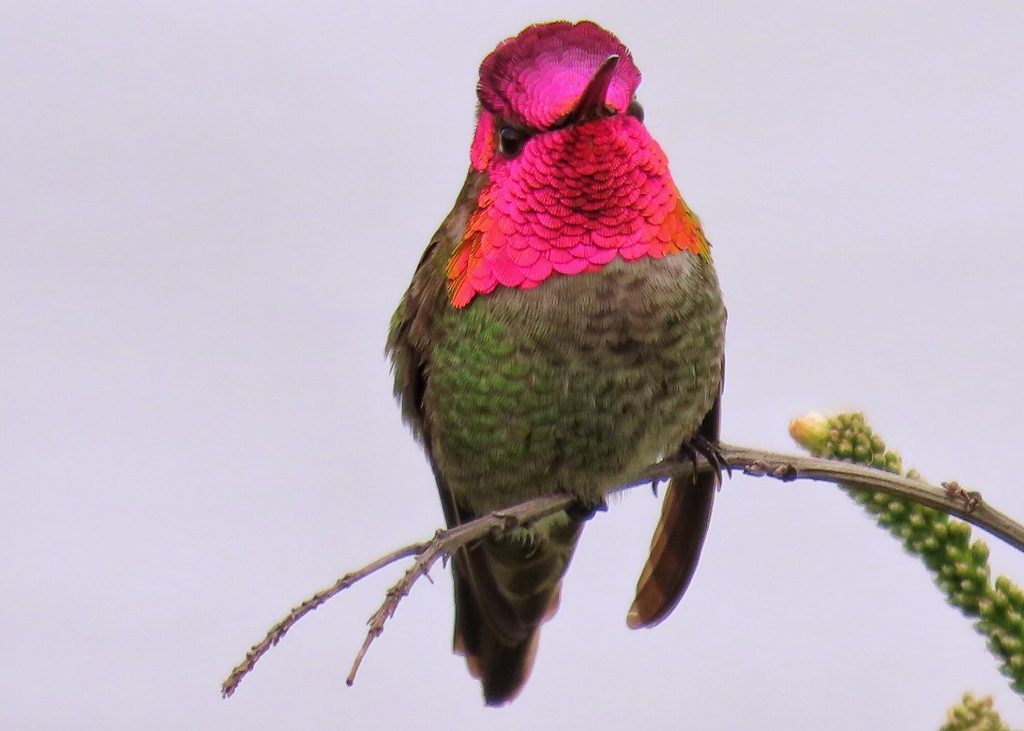
During this same period I also bought a very cheap pair of 8×30 binoculars and a cheap and incomplete field guide to the birds of Washington state. Never buy cheap binoculars! Economical is okay, but cheap is just asking for frustration, because the optics just don’t render image clarity, especially in the low light so common in our region due to overcast and/or dense canopies. Because of this I didn’t make much progress in attempting to become a birder. I did relearn the common ducks, and had some fun at the feeders at the local Water Resources Education Center. I even managed to find and identify a Townsend’s Warbler at a local cemetery. Such a jaunty little bird, with its bright colors and bold patterns, bouncing from limb to limb in its constant gleaning, it immediately became, and continues to be, one of my favorite birds. They are one of only two warblers that can routinely (though they are not common) be found in winter in the PNW, the Orange-crowned Warbler being the other.
And this find led me to reading about John Kirk Townsend, who spent 2+ years at the original Fort Vancouver in the 1830s, and who was also honored in the common names Townsend’s Solitaire, Townsend’s Chipmunk, and Townsend’s Big-eared Bat, among others, and all of which also bear his name as a specific epithet, and in the scientific names Lepus townsendii (Whitetail Jackrabbit) and Allogona townsendiana (Oregon Forest Snail).
This was my introduction to the great naturalists of the 19th century, men like Townsend and David Douglas and Archibald Menzies and Thomas Nuttall who explored and named and categorized the flora and fauna of our region.
Many of these naturalists were not only great scientists, but in their exploration they endured hardships and privation almost incomprehensible to a child of the late 20th century such as myself. And for the most part it wasn’t because of bad luck. It was simply the conditions they were willing to endure because of their passion. I am somewhat past the age of hero worship, although the possibilty that the eloquence, humanity, and sheer reasonableness of Barry Holstun Lopez and Robert Michael Pyle could actually change minds tempts me to such levels of adulation, so it is mostly with great admiration that I view Townsend, Douglas, Nuttall, Menzies, LeConte, Escholtz, Steller, Suksdorf (and don’t get me started on how much I love Wilhelm Nikolas Suksdorf!), and the rest of those great pioneering naturalists, as well as a twinge of envy for them having the opportunity to explore this country when everything they saw was a discovery, and a large dose of relief that I can reach places in a few hours that would’ve cost those adventurers weeks of hard travel, and do so from the climate controlled and music filled comfort of my Dodge Caravan while fueled by peanuts, string cheese, granola bars, and instant iced tea that I can simply purchase in quantity at the local Winco.
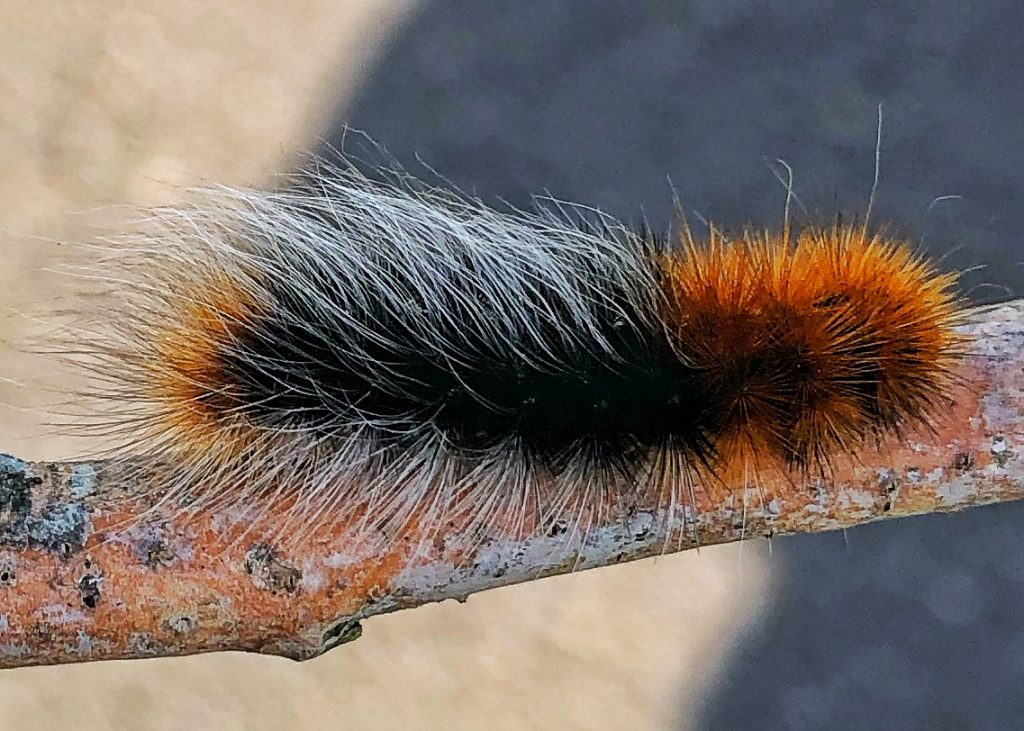
What really propelled both my skills and interest in birding was when Pam bought me a nice, but economical, set of 10×42 binoculars for my birthday. Suddenly I could scan and focus and actually catch up to most of the birds I was seeing, and get good enough looks to make mental notes that I could then utilize for identification. This in turn led me to purchase David Sibley’s excellent field guide to western birds, and interest quickly became obsession. Which in turn led me to joining the Vancouver Audubon Society, a place where obsessiveness such as mine was par for the course.
Hanging out with those experienced and knowledgeable birders was both revelatory, and a whole hill of fun! They were very welcoming, and would frequently invite me to go birding with them in their favorite locations. Because, unlike hunters and fisherman, birders are not at all secretive about good locations, undoubtedly in part because the point was not to kill, or in the case of flyfishing inevitably educate, the object of the quest, thereby depleting the resource. Plus they clearly understood that the future of their hobby depends on waking people up to the beauty, grace, and intrinsic value of birds, and the perils faced by the objects of their desire.
Best of all were the monthly field trips, where groups of likeminded people travelled to far flung destinations to search for our feathered friends, led by folks who had not only been there before but knew the hot habitats. I always particularly enjoyed birding with Wilson Cady, who, in addition to being an outstanding birder, was a very good general naturalist and the antithesis of the ‘1% naturalists’ many birders become, people who are so consumed by the birds themselves that they don’t see the ecosystem of which they are but a part. Nor was he a ‘twitcher’, a British term for those people just looking to check off, or twitch, another bird for the life list. Wilson is a good teacher, and showed me how habitats are built from the foundation of the plant life, so that they can support the birds we were looking for.
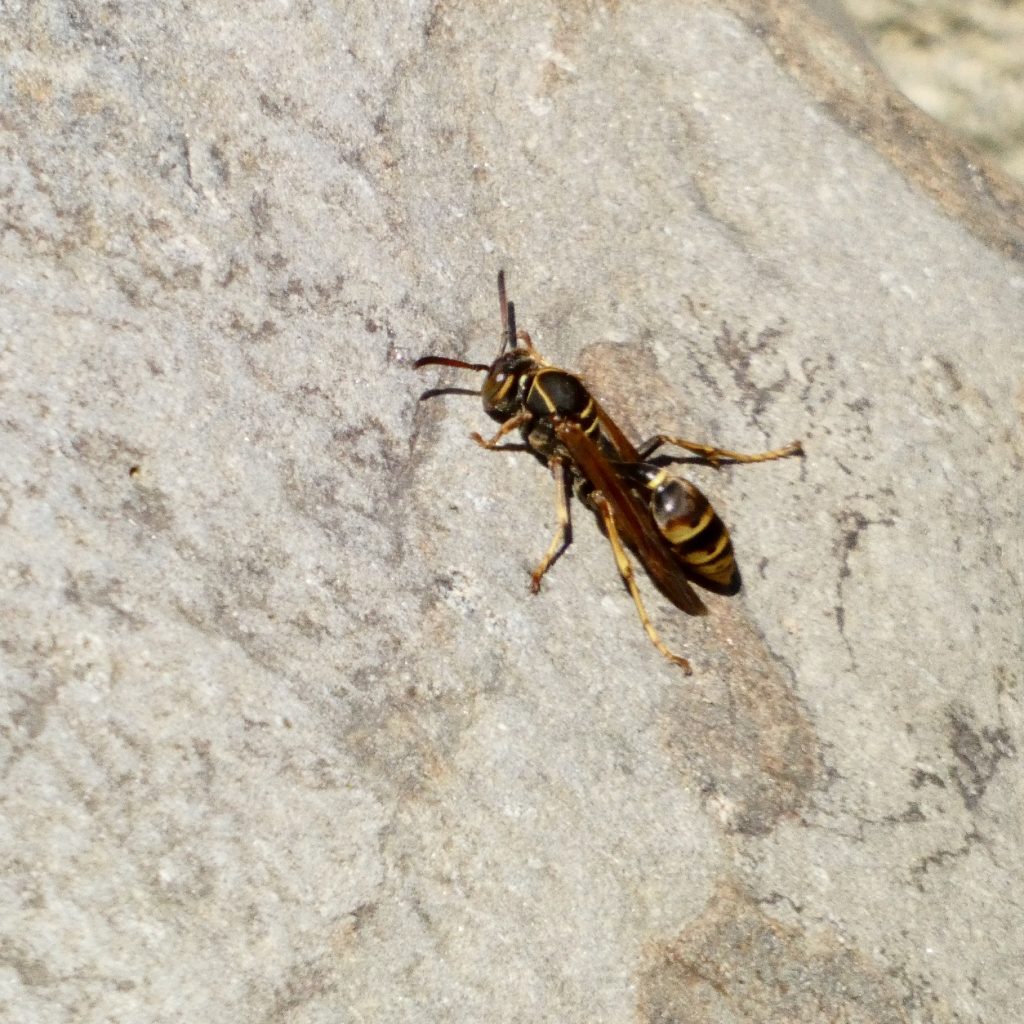
This was an exciting time for me, and I found lifers on nearly every excursion for awhile. I was going out regularly, particularly to the Salmon Creek Greenway and along the Columbia River, because Pam, who worked as an in home caregiver, had regular clients in those areas, and she would drop me off on her way to work, and pick me up on her way home.
I wasn’t working steady at the time, because for some reason no one wanted to hire a 50 year old construction worker with a spotty employment record, a bad attitude, no drivers license, and a history of substance abuse, but I did odd jobs and day labor when I could. Because of that excess of free time I was trying my hand at writing, and I had started, and was mc-ing, a monthly open mic for poetry at a local coffeehouse. Because of the connections I developed through that I was able to wangle an opportunity to write a column for the Vancouver Voice, a local monthly alternative newspaper. The column was called ‘Wild Clark County’, wherein I wrote about the wild plants and animals that could be found locally, and for it I was paid the princely sum of $35 an issue. Around the same time I started writing for an online magazine called the Portland Examiner, but it paid even less, being based on the number of clicks my articles received, which wasn’t a great number. But I learned many valuable lessons about writing descriptively for public consumption, and hopefully that experience has improved the quality of the writing on my website. Both gigs disappeared in the fall of 2011, the Voice because it folded and the Examiner because I couldn’t justify the time vs pay ratio, but I had at least fulfilled a lifelong ambition to be a professional writer, as long as you define ‘professional’ as ‘earning money at it’, rather than ‘making a living at it’.
Over the Memorial Day weekend I went to the big Audubon camp out at Wenas Creek recreational area in Yakima County, Washington, with Ruth and Roger, frequent birding companions and a couple of my favorite people that I had met through Audubon. She was a professor and genetic scientist who continued to work well past retirement age because of her passion for the research, and he was a retired professor of Russian language and literature. They were fascinating people, and some of the best parts of our adventures were the discussions we had on the drive to our various destinations. But they were also top notch birders! Ruth in particular had a great eye, and could manage to spot birds while setting a rapid pace, whereas I needed to, and still need to, be moving at a crawl to avoid missing most of the creatures around me.
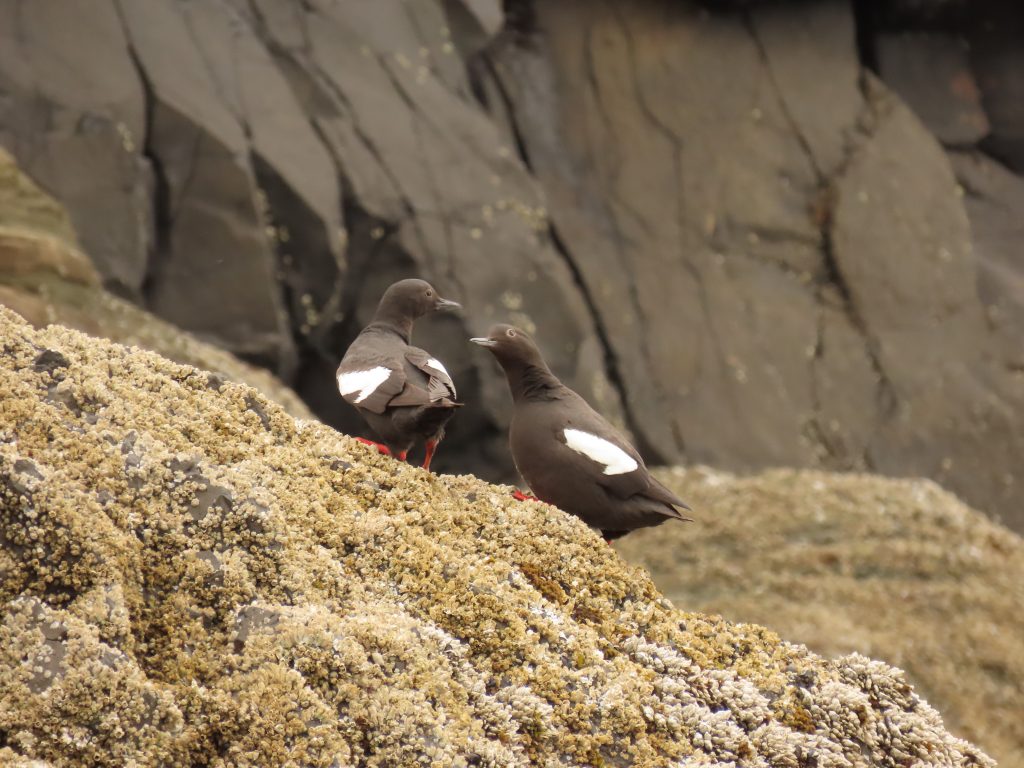
This trip was both a zenith and a nadir of my obsessive birding days. A zenith because it was all birding, all of the time. I was up and out of my tent before dawn, and wasn’t back until well after dark. I lived on Mountain Dew and bologna sandwiches so I wouldn’t have to spend time cooking, walked probably 20 miles a day, and found around 75 species of birds, at least a third of which were lifers because it was spring migration in a whole new set of ecosystems. But it was a nadir because, when it was over, I realized that I hadn’t even looked at anything the whole time. I was always scanning through things, looking for birds. Late May on the east slope of the Cascades, and I couldn’t tell you a single wildflower I had seen. I was becoming a ‘1% naturalist’! And, worst of all, I had disappointed my beloved Pamela by staying an extra day and therefore having to hitchhike home.
Back home I endeavored to rein things in, be a good partner, and dedicated myself to bringing more cash into the household. But this still left plenty of time for wandering in nature. And as we got into the warmer days, when the birds are hidden by leaves and are only very active early and late in the day, I started noticing dragonflies, and to a lesser extent, butterflies. They were intriguing, but seldom stationary, zipping or fluttering by without offering good looks. I didn’t own a camera, and my binocs were not really close focusing, so identifying members of either order seemed impossible. Then came a moment that eventually led to drastically widening my horizons and shifting my perception.
A bold but simply patterned and very striking dragonfly landed on the asphalt trail about ten feet in front of me, right in the sweet spot where I could focus the binoculars on it, but where it filled enough space to see it very clearly. It was a couple inches long, with a bright, bluish white abdomen. Each wing was almost as long as the body, with large irregular black markings in the middle of the translucent wings, and smaller black marks near the base. At that time it was by far the coolest looking creature I’d ever seen through my binoculars. I tried to memorize every detail. Then it flew off. But I saw a few more on that walk that looked very similar, many of them perched on twigs or cattails, and also some that looked different. In fact, now that my eyes were really open to them, on the rest of that walk I saw dragonflies everywhere. I was so intrigued that I cut short my walk and rode my bicycle the five miles to the library to see what I could learn about them. And there I discovered Dennis Paulson’s ‘Dragonflies and Damselflies of the West’, which, after about 5 minutes of page turning, yielded not only my first dragonfly identification- Common Whitetail (Plathemis lydia), but, after reading through much of the natural history of this order that is contained in the first dozen or so pages, a new obsession.
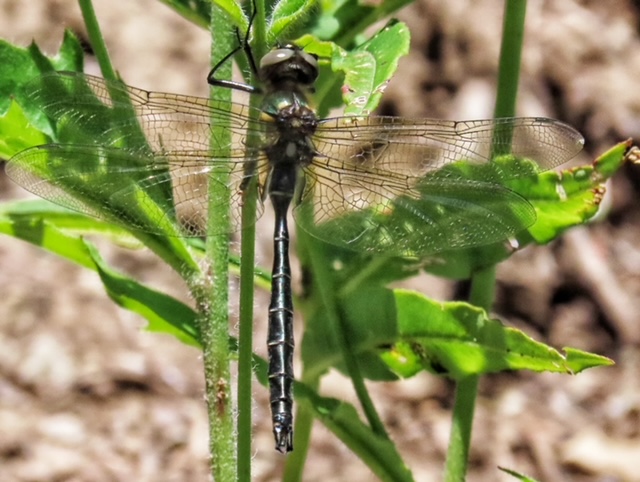
Which had a sibling obsession by the time I left the library because I also found Bob Pyle’s ‘The Butterflies of Cascadia’, my introduction to his works. These two books were revelatory in multiple ways. Not only were they interesting and even entertaining, as well as being incredibly detailed and purporting to list every species I might find in my region in their given categories, but I simply had had no idea that such narrowcast books existed for bugs. At the time I had an old copy of Audubon Society’s ‘Field Guide to the Insects and Spiders of North America’, but the net it cast was so wide that I had had little success in using it, and I hadn’t even thought to look for the dragonfly in there, although I would’ve found it had I looked.
I checked out both books (and continued to renew them for as long as I could) and in the days that followed I tromped through many fields and marshes in the quest for my newfound objects of affection. But they still zipped and fluttered by, seldom pausing long enough for me to get a good look, and I realized I needed an insect net. So, after a morning of stacking block and shoveling dirt for a homeowner friend, I navigated the multiple busses necessary to get over to American Scientific in Portland, where I spent $12 to buy myself a 3’ long, wooden handled insect net. I was so excited. Now I was ready to be an entomologist! Which was hardly true, though it did clearly signal a new phase of the adventure. Riding those urban buses, and standing on big city sidewalks, I both desperately wanted someone to ask me about the net so that I could share my excitement, and deeply feared that they would and then expose the depth of my ignorance. Although it must be said, because of what I have learned over the past ten years, that I am more deeply aware of the extent of my ignorance now than I was then.
The next day, armed with these two books, the net, and some empty plastic mayonnaise jars, I went into what used to be, before they built a couple of dozen townhouses there, the empty acre and a half field next to our apartment building. After much fruitless and misdirected swishing of the air I finally caught, and catching is important because, to paraphrase the fishing writer John Gierach, otherwise ‘you’re just a guy standing in a field waving a net’, caught, and subsequently identified thanks to having outstanding resources, a Blue-eyed Darner Dragonfly (Rhionaeschna multicolor), and a Cabbage White Butterfly (Pieris rapae). Both are very common species, but that was almost better at this point, because every time I saw either one it made me feel like I’d been initiated into an exclusive club, and I could read the secret code.
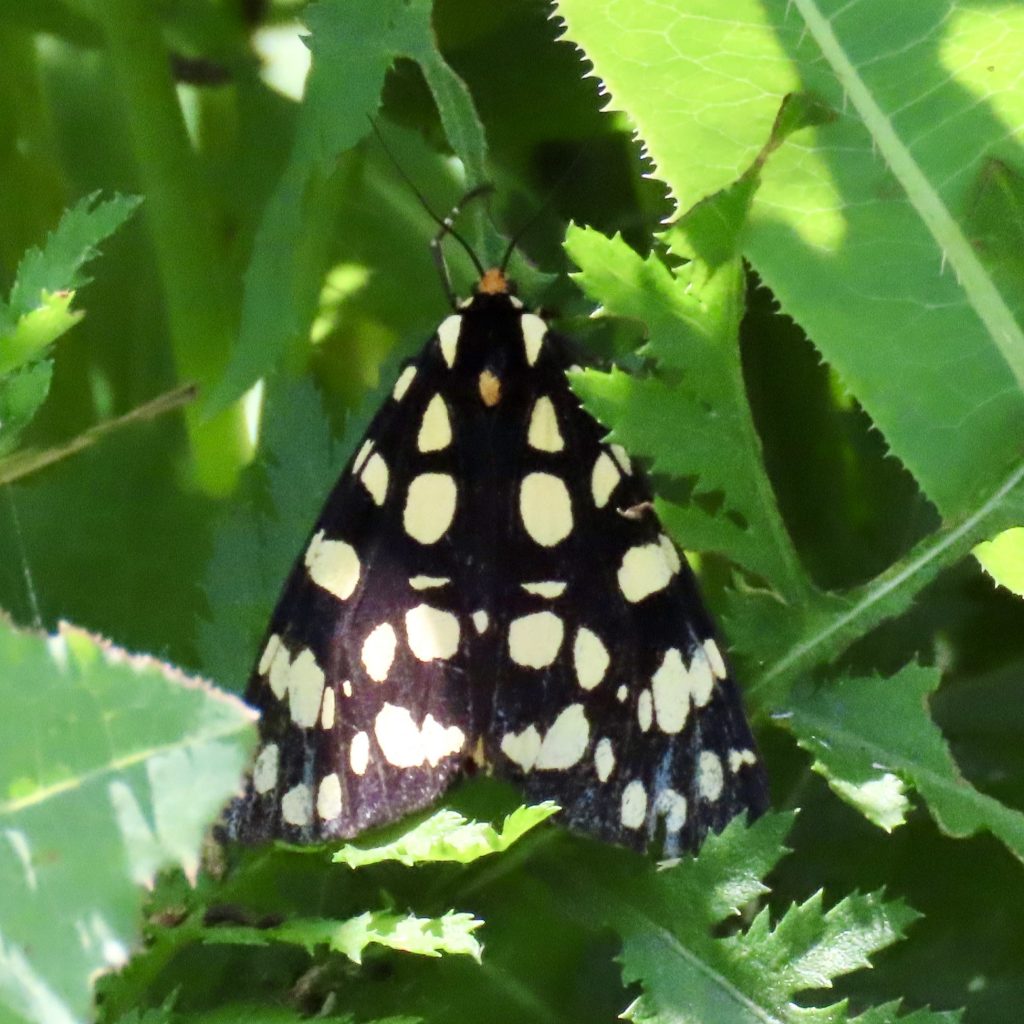
One of the first places I went a-netting afield was along La Framboise Rd, one of the roads leading to Vancouver Lake. There is a section where one can access a weedy dike that runs between two wetlands, and leads to a scrubby, wooded area. I had often birded this area because it’s varied habitats have a nice diversity of birds. But I had also frequently seen both butterflies and dragonflies there, so I pointed my bicycle that way, a decision that ultimately, albeit years later, led to crossing something off my bucket list. And sure enough, within fifty yards I had seen members of each order. Which of course I failed to catch. Possession of a net does not imply the ability to use it successfully. But finally I did catch a small blue butterfly, and managed to successfully transfer it from the net to the mayonnaise jar. And then out with the book. The first thing I noticed was the tiny tails at the bottom of the wings, and the first butterflies I found with tiny tails were the hairstreaks. But none of them were blue above. And neither was the tailed copper. Then I found the entries for the tailed Blues. The butterfly I had in the jar sure looked like the photos I was seeing of Eastern Tailed Blues (Cupido comyntas), but they weren’t shown as being in western Washington, though there are known colonies on the eastside, especially in the northeastern corner of the state, and they were known from Columbia County, Oregon, which is actually visible from where I was, across the floodplain and on the other side of the Columbia River. On the other hand the Western Tailed Blues (Cupido amyntula) were shown as being common throughout western Washington and Oregon. The markings on the ventral side of the wings were somewhat intermediate in heaviness, and the second orange lunule was not especially distinct. So, lacking the courage of my convictions, I told myself that rookies don’t make discoveries, called it a Western, and let it go.
Fast forward 7 years. I’m much better at all of this recreational naturalist stuff, and Bob Pyle and Caitlin LaBar come out with ‘Butterflies of the Pacific Northwest’, an updated version of Cascadia. Flipping through my copy I notice that the Eastern Tailed Blues still had not been documented in western Washington, and the authors make a point of noting that oddity. So, on the next available sunny day, I grab my net and head back to that weedy little dike. And I manage to find and net one, and get some decent photos. Now, I must confess, I was still not 100% positive it was an Eastern. And I’ve been gobsmacked a few times by incorrect identifications. But I posted it on Facebook, in Butterflies and Moths of the Pacific Northwest, and in a short time Norbert Kondla confirmed that it is an Eastern Tailed Blue. I then posted it to a northwest lep forum, and Caitlin LaBar, and Jonathan Pelham, who is the records keeper for the state, confirmed that it was indeed a first record for western Washington. Now, I know this isn’t a huge range expansion, but it was something to be noted, and it shows that you don’t have to be an expert to add to the store of knowledge.
But the other reason I mention it is because shortly thereafter I received an email from Bob Pyle, who was at the time doing a Washington Big Year for butterflies, asking if he could go butterflying with me so I could show him that location! That led to the bucket list item I mentioned before, an afternoon afield with Robert Michael Pyle! Unfortunately we didn’t find any Cupido comyntas that day, although he did get one there a month or so later after I had alerted him to the presence of a second brood. But still it was a fantastic afternoon, because Bob Pyle is just as warm, engaged, eloquent, humorous, reasonable, passionate, and knowledgeable in person as he is in his books. And let me mention knowledgeable again, because the man is an absolute fountain of information as regards the natural history of butterflies.
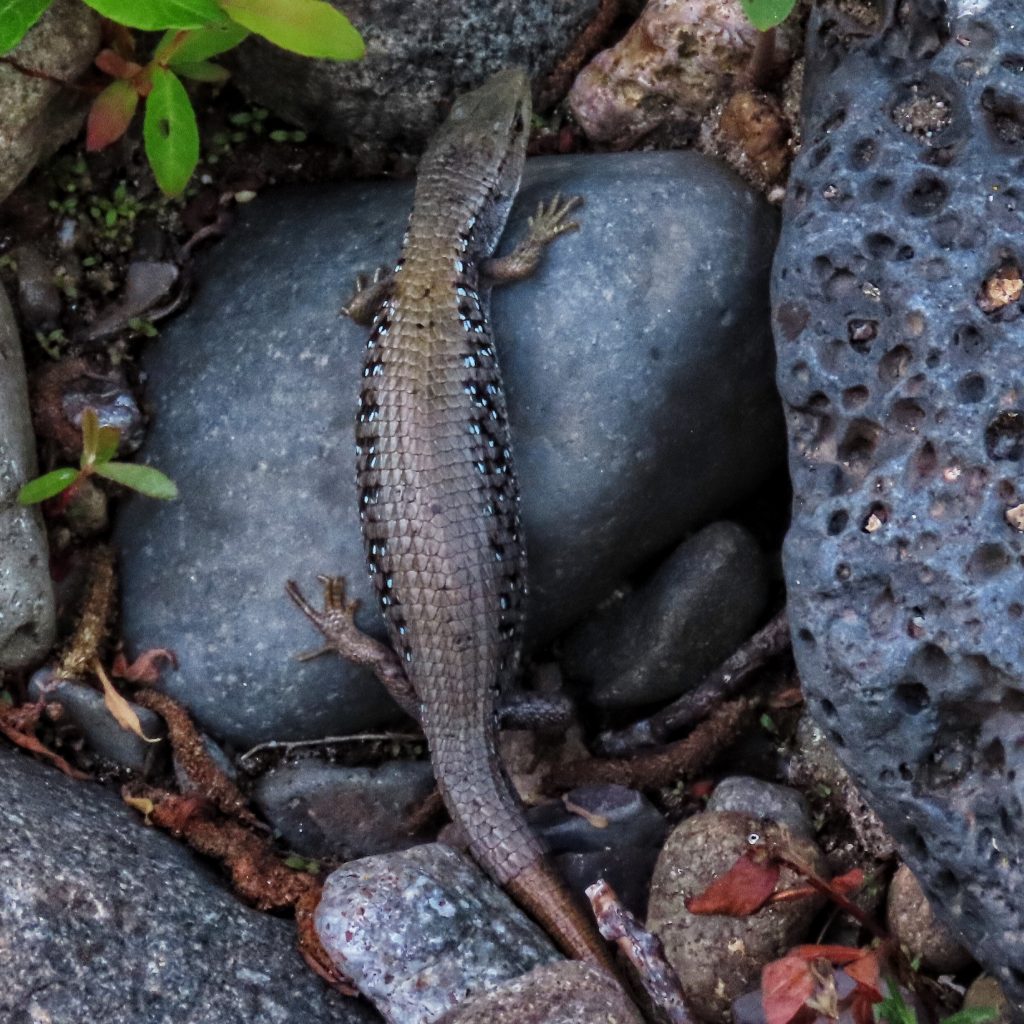
But back to 2011, I was having a blast, checking out swamps and just identifying the heck out of the dragonflies. Butterflies too, when I could find them, but with habitat destruction, pollution, pesticides and a variety of other anthropogenic destruction there just aren’t a lot of butterflies within an easy bike ride of downtown Vancouver. And then one day I saw a newspaper article about my old friend Craig Sondergaard and his massive insect collection.
I felt a bit sheepish about finally contacting him after lo those many years, but it turned out that not only was he glad to hear from me, but in no time at all we were talking like it had been a few days rather than several years since we’d last conversed. And in a weird bit of synchronicity he had also recently developed a strong interest in dragonflies. So for the next several years he and I, often accompanied by his friend Jim Campbell, recently retired from being a biology professor at Clark College, made frequent day trips to the natural areas within reasonable reach. We made a good team of naturalists, and while the only areas I had much to contribute to involved birds, dragonflies, and butterflies, Craig and Jim were well versed in other insects, reptiles, amphibians, and botany.
Things changed when I finally found full time employment in May of 2012. This came about because my father, with whom I’d had a fractious and fractured relationship for years, much of which had to do with my chemical dependency aided irresponsibility, concluded that this sea change he saw in his son was a real thing, and that, in one of those Catch-22 scenarios, I couldn’t get my drivers license back without economic viability, and I couldn’t achieve economic viability in the 21st century without a drivers license. In what was undoubtedly the kindest, most loving, affirming, supportive, and just downright useful thing anyone has ever done for me, he hired a lawyer and paid my hefty fines, and in December of 2011 I was once again legally entitled to operate a motor vehicle.
This little piece of plastic did garner me some interviews, a vitally important part of the hiring process that had hitherto been utterly lacking, but it did not erase the mitigating factors of age and disjointed work history. Until Pam spotted a ‘now hiring’ sign on the back of a medical transportation van. So I phoned them, went in for an interview, and was hired, easy peasy. It’s ironic that it was so straightforward after the hundreds of resumes I had sent, the hundreds of applications I’d filled out, that it turned out to be as simple as going and talking to someone and walking out gainfully employed. And it does seem I was rather perfect for that job, since I have been fascinated by the various, best, and fastest ways to get from point a to point b ever since I was a little kid on a bicycle.
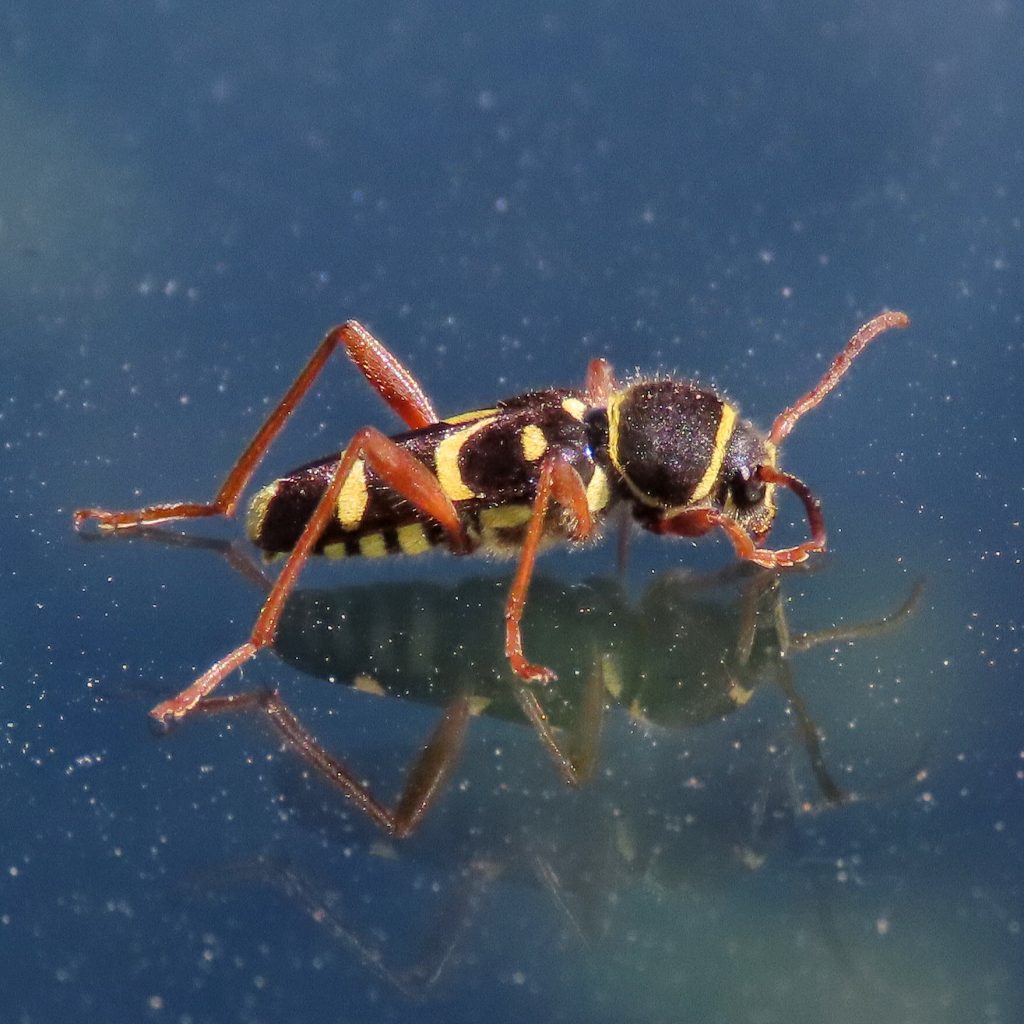
While it was certainly good to be contributing more substantially to our household finances, there were downsides to the job, such as frequently being at work for 11-12 hours, and only getting paid for 8 or 9 because we didn’t always get paid for hours we weren’t actively transporting clients. But I tried to use that free time to my benefit, and since I spent most of my time around the Longview/Kelso area in Cowlitz County, an area with which I was somewhat unfamiliar, I was able to do some time constrained exploration of new territory.
I did still have my weekends, and one of my main projects that summer was seeing if I could find a Walker’s Darner (Aeshna walkeri) in Washington state. They were known from Oregon, and even the northern part of that state, but had never been documented in Washington. And I must admit that I didn’t know what species of darner I was swinging at on that warm, sunny Autumnal Equinox in 2012, standing just inside the shade on the shoulder of Major Creek Road in Klickitat County, Washington. But even through the mesh I was pretty sure it was a Walker’s, because it had the straight, thin, white, black-bordered thoracic stripes, and lozenge shaped appendages diagnostic for that species, and our local Odonata expert Jim Johnson confirmed this the next day. This wasn’t a huge range extension, but I was particularly proud of this one because I had used some knowledge to hunt through likely habitats, rather than just blundering into it as I had with the Eastern Tailed Blue, and I had been rewarded by finding the 81st species of Odonata documented in Washington state. And, just to add a little icing to the cake, I received a congratulatory e-mail from Dennis Paulson, the man who literally wrote the book on western dragonflies.
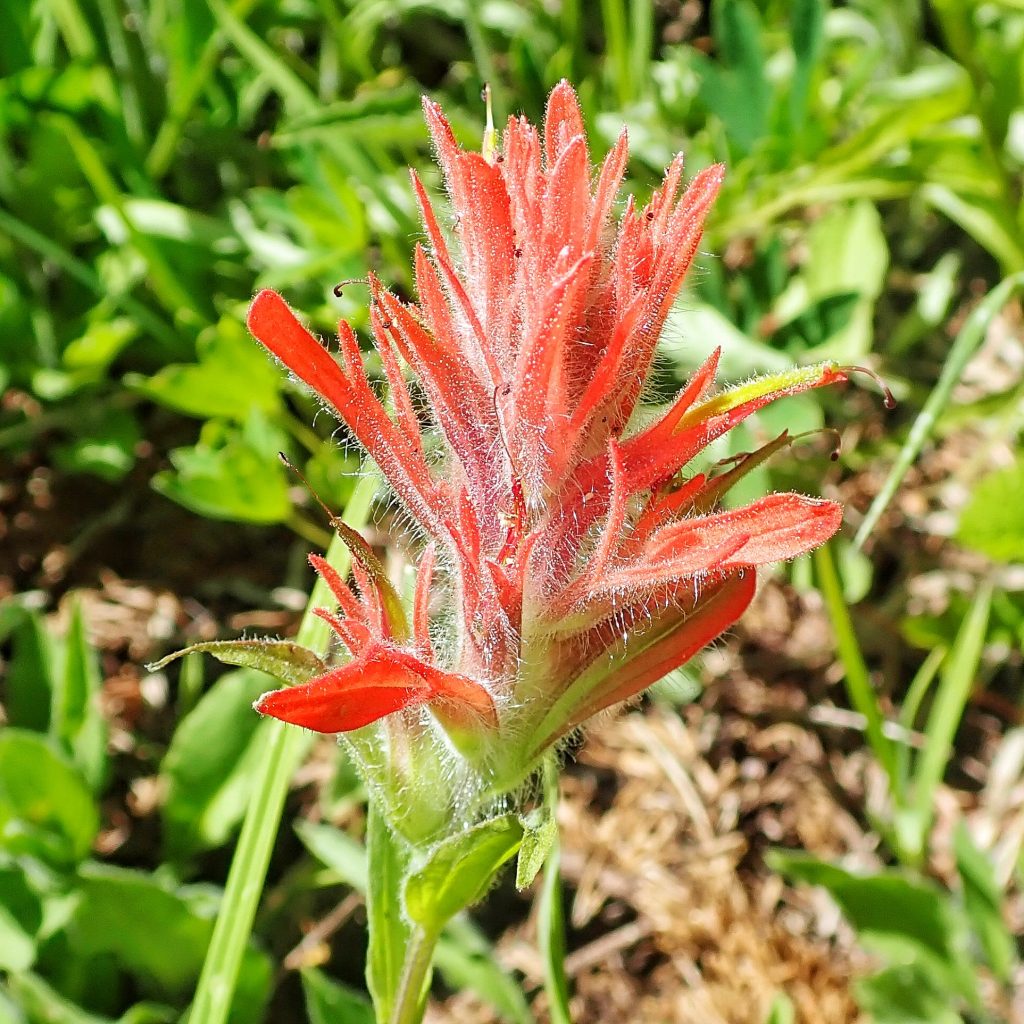
But after this I didn’t really grow as a naturalist for the next several years. For one thing I took up rock climbing again, although this time it was for the sheer joy of it rather than the ego goals of being one of the best. Because, simply put, I love rock climbing! I love the feel and texture of the rock under my fingertips. I love looking at the shapes and occasionally perfect Euclidean formations! I love the dance upwards, the flowing through the holds! I love the times when I can’t tell where I end and the rock begins and how on certain technically difficult moves I feel like I am attached to the rock purely by a mental willpower which transcends the physical! I love the adrenaline rush of turning a corner on small holds with my butt hanging out over hundreds of feet of air! (The technical term is ‘pucker factor’) I love being in places that very few other people will ever be, and I love the views I get there, all the more so because I feel I’ve earned them! I love the laser like focus that I get while climbing, and how the whole rest of the world just disappears! I love the indifference of rock, and I love connecting its imperfections into a route I can scale!
But if I didn’t grow, I also didn’t regress. The climbing trips weren’t just about climbing. I often spent at least as much time looking for birds, wildflowers, dragonflies, and butterflies, as I spent in the process of getting two people safely to the top of a rock formation. I still went camping and hiking with Pam, and with my non-binary offspring Morgan, and I was still a frustrating hiking companion for them both, because of the stuttering pace I set due to having to frequently examine and photograph some wild living thing. I still went nighttime road riding for amphibians with Craig and Jim when the first warmer rains of late winter prompt their search for a mate. I still had projects, like the couple dozen trips over the course of two summers trying to, and ultimately succeeding at, documenting Pacific Spiketails (Cordulegaster dorsalis) in Clark and Cowlitz Counties, during one of which I blundered into a Canada Darner (Aeshna canadensis) that was also a range extension into lowland western Washington, as well as managing to push the late flight date in Washington for Grappletails (Octogomphus specularis) back a couple of weeks and almost into September. But really I was just treading water.
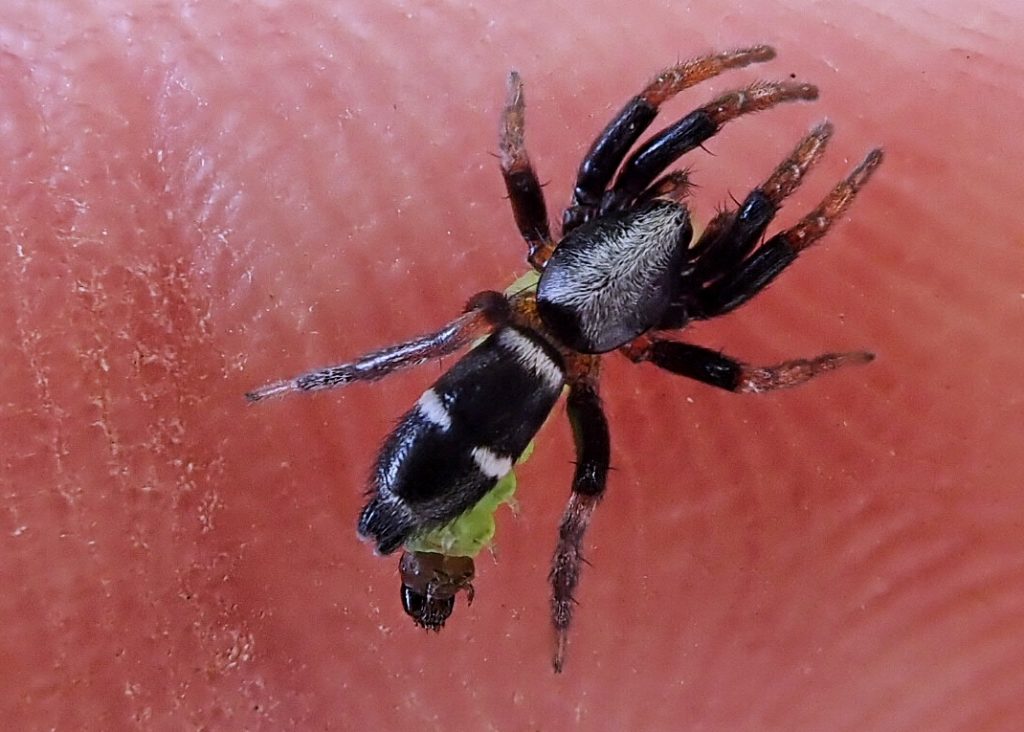
Several things happened in 2018 that ultimately led to the path I am on today. The first was that I began stepping back from rock climbing, because the training I needed to do just to keep this nearly 60 year old body in climbing shape was usurping all of my free time, time that was often not pleasant spent because the joints in my arms and hands were protesting loudly at the long term abuse.
The second was that in mid spring I took an extended trip down to the North Umpqua and surrounding environs with Craig Sondergaard. This was during the initial portion of my weeklong vacation and I mentioned to Craig that I was hoping to find 300 species of vertebrates, blooming wildflowers, butterflies, and dragonflies combined during my vacation. And he asked me why I was confining it to those categories, because we could easily find 300 species of wild living things on that day if we made the effort. Somewhere in the ensuing conversation the idea and the phrase ‘10,000 things of the Pacific Northwest’ entered my consciousness and began to rattle around.
And then, in late summer Merrill Peterson published his outstanding ‘Pacific Northwest Insects’. This book was a game changer. For the first time I felt like it might be possible for a recreational naturalist such as myself to at least ascertain a starting point in the identification of beetles, true bugs, flies, and Hymenoptera. It is not complete of course, since you don’t need a forklift to move it about, but it is representative for a huge and diverse number of taxa, and he has that wonderful ‘similar species’ section that helps fill in the gaps. I’m sure most, if not all, of you are familiar with this book, which is really the gold standard for multiple order regional field guides, so I will staunch my gushing and merely state that, without this book, there is no way that I’m doing this project/website or talking to you tonight.
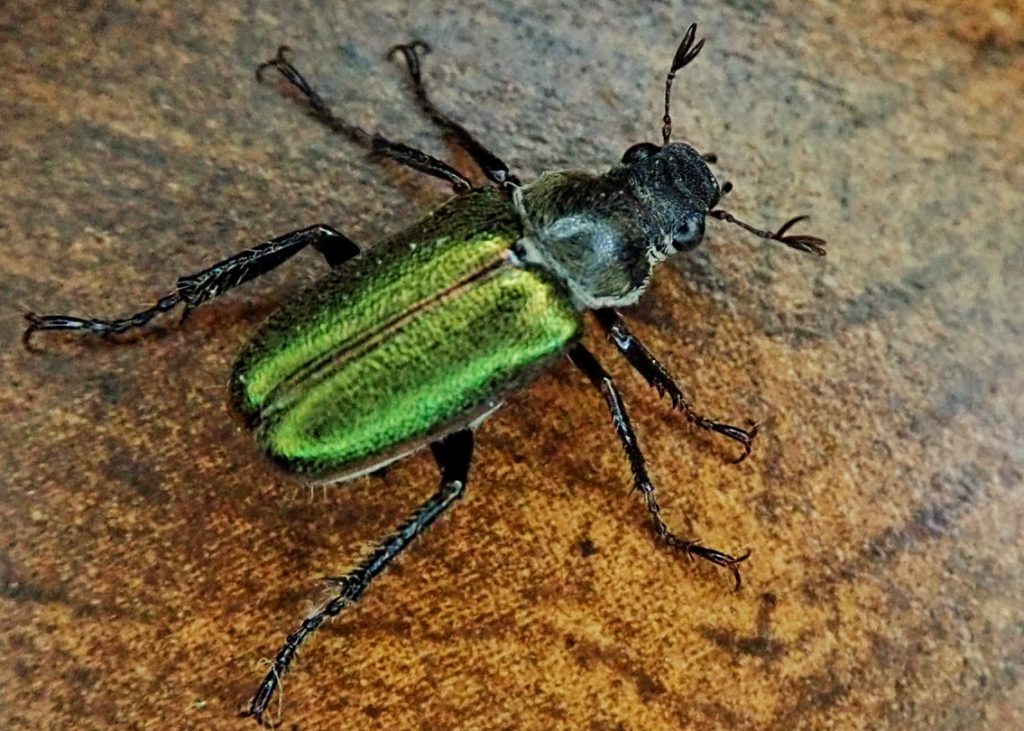
Around this same time I changed jobs, or more precisely, changed companies for which I did the same job, but with the huge difference that I got paid more per hour, and though I still worked 10-12 hours a day, I actually was paid for every minute I was at work. This led to a substantial influx of disposable income, income that I chose to dispose of by buying books to assist in identifying and understanding a much broader spectrum of wild lifeforms than I’d previously applied myself to.
So that, after a glorious period of discovering new bugs thanks to the inspiration of Merrill’s book, as the winter closed in and I decided I wanted to learn about gastropods, I purchased Thomas Burke’s ‘Land Snails and Slugs of the Pacific Northwest’. Pursuit of which creatures brought me into close contact with many mushrooms, which necessitated purchasing Trudell & Ammirati’s ‘Mushrooms of the Pacific Northwest’. And after a chance comment to Craig about bird poop on a sidewalk led to him informing me that it was actually lichen, I purchased McCune & Geiser’s ‘Macrolichens of the Pacific Northwest’ and then discovered McCune & Hutten’s ‘Common Mosses of Western Oregon and Washington’.
It turned out to be harder to find snails and slugs than I would’ve guessed, but I had some success identifying the ones I did find. I did find boatloads of mosses, lichens, and fungi, and I would like to say I spent the winter identifying the heck out of them, but that wouldn’t be true. I made some serious effort though, and learned much, but it will take years before I feel like I have much of a handle on those groups of organisms. Because they are so difficult for someone of my skill level, it is extremely satisfying when I do think I have one identified, but I’m never completely confident in my conclusion. None of which takes away from the fact that I became fascinated with them, and signed up for a couple of workshops to learn more.
The first of these was at Opal Creek Ancient Forest Center near the North Santiam River, a wonderful little educational and hospitality enclave that was destroyed by wildfire in 2020. I wrote extensively about this experience on my website in a blog called ‘Mothing’, so I’ll give you the Cliff notes version here, which is that, in addition to a great learning experience with very knowledgeable teachers, on this trip I contracted moth fever. This occurred because I was far too jazzed by the day’s experience to sleep, and completely uninterested in socializing with my classmates because they seemed inclined to discuss ‘real life’, rather than the sights and lifeforms of the day. Remembering the array of moths I’d been seeing on Facebook I decided to search the lights of the compound for these creatures.
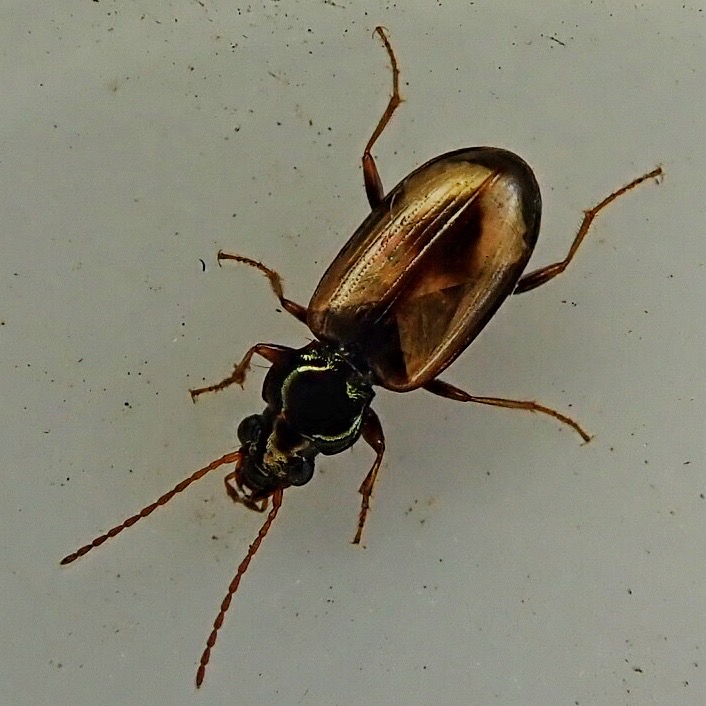
And I found some! The previous winter I had invested in an Olympus TG5 with macro settings and in camera photo stacking for the purposes of photographing mosses and lichens. And it turned out to also work very well for moths. I only found 8 species that night, but even with incomplete and non-moth-specific resources I managed to identify one of them, and get 3 more to genus. And I was hooked.
After the trip I started accumulating the UV lights and batteries and other assorted gear needing for mothing, and I began spending at least one night a week out in the woods and fields running lights. And manoshevitz, it can be fun! Set up the gear, and the bugs come to you. And not just moths. Crane flies, Mayflies,Caddisflies, beetles of all sorts, including big Dytiscids, spiders, parasitic wasps, midges, gnats and other tiny Diptera, sometimes by the hundreds, giant water bugs, solpugids if they’re around, and frequently a chorus frog or two, since I’ve set up a buffet.
For about 14 months I had moth mania. And it was a mania, as evidenced by the fact that I payed $1000 for a complete set of ‘Moths of North America’ when there were only a dozen moths I could identify by sight.

In October of that first year, when the moth numbers dwindled to nearly nothing, I actually became depressed. I didn’t even look for moss, or lichens or snails. In late January I started to perk up, and did some road riding and headlamping for salamanders, and in February I started running lights for moths, although I didn’t have any real success until March. And in March the pandemic hit hard, and I was layed off. So that while most of the world was in lockdown, lonely, deep in fear, depressed, I was having a great time, and feeling no guilt about it because all of the things I wanted to do and wanted to see took me away from people.
And then, after 2 glorious months, I got called back to work. But the job wasn’t any fun anymore. Protocols in every medical building and not enough staff to make it work smooth, half my clients scared to death to even be out and about, and the other half fouling the air with the stench of their ignorance. 55 hours a week of that, and I had to go mothing just to escape. But finding lots of moths, racking up the numbers, on a pace for 500 species during the season…and I ran into a wall.
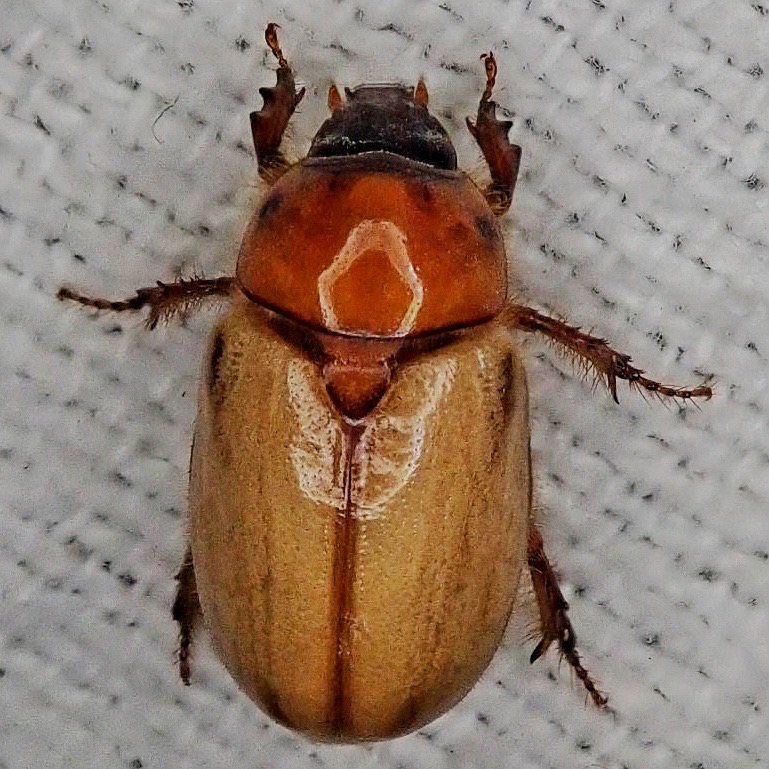
I had come to a point where my whole recreational naturalist schtick just felt shallow and hollow. I had become a twitcher. Mark off that moth and on to the next one. Gotta post 25 new moths a week on Facebook. Found over 40 species last night. Even back in the beginning. Found 68 species of wildflowers yesterday. Found 40 species of birds on Saturday. It was all about numbers and ego gratification. New early date for Beaverpond Baskettail dragonfly. New late date for California Darner. Look at me, look at me, I found something new! I wasn’t really learning anything about them. Just checking a box, adding it to my scorecard. Possibly my despair was due to hardly sleeping on the weekends because I was running lights, and hardly sleeping during the week because I was trying to process last weekend’s moths before I had a bunch of new ones, and that certainly exacerbated the anguish. But I think it was really just coming face to face with my inner addict, that part of my mind dedicated to more, more, more, to specialness and it’s lifeblood of (mostly imaginary) competition, to a Platte River view of things, a watercourse described as ‘a mile wide and an inch deep’ and ‘too thick to drink and too thin to plow’, both of which fit this analogy, and realizing that it was neither a pretty, nor a constructive, mode of being in the world, because it is designed to reinforce my separation from the world, rather than as a doorway to facilitate connection.
The project/website seemed like the answer. If I’m just checking a box, at least make it a box with content, as well as form. Or better yet, like a giant paint-by-numbers, where every shape I fill in with a different color helps to make the whole more visible, more coherent. I will never claim there isn’t ego gratification in doing this, but I try to balance that with the humility engendered by acknowledging the breadth of my ignorance. And though there is still that strong tendency to obsession, I am, with varying degrees of success, attempting to recast that in my mind as enthusiasm and dedication to the cause.
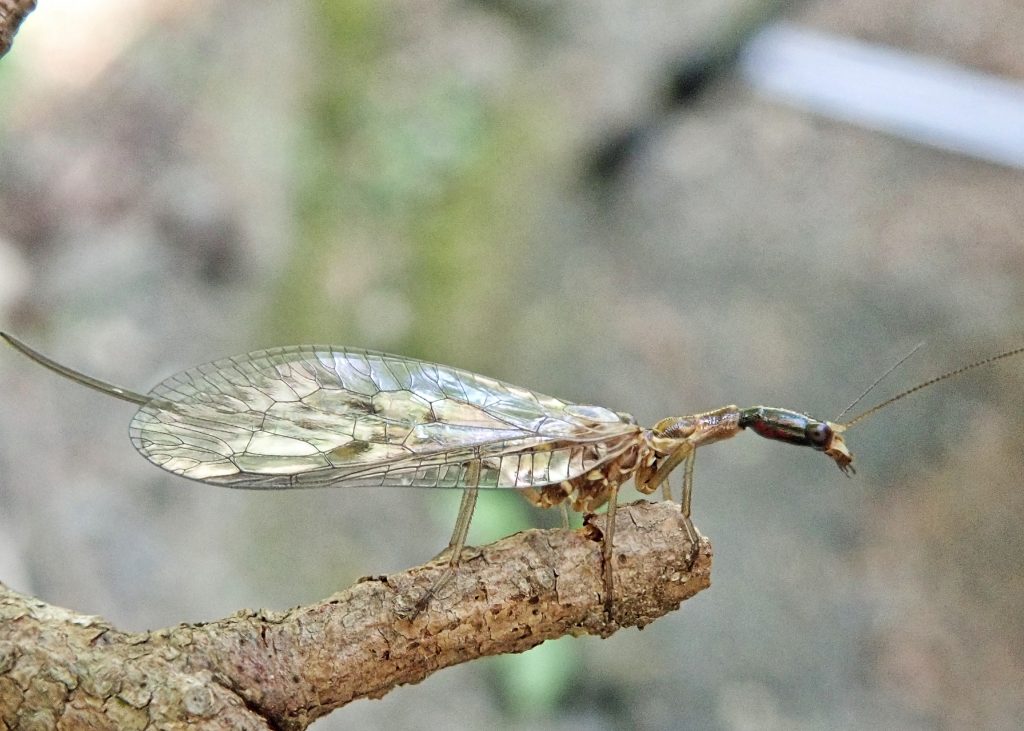
Because of that ‘dedication to the cause’, and after running all of the numbers to make sure it wouldn’t impose a financial hardship on my beloved wife (who confirmed my status as a very lucky man by marrying me on June 1, 2019) I cut back to only working 3 days a week about a month after starting my project. A little over a year later I am 1/30th of the way to my goal, and I have found that that is still too much time in pursuit of money, and leaves too little time for my project. Because of the strict budget I put myself on to justify only working part time, although it has proved far more successful to resist Taco Bell burritos than Arthur Evans’ ‘Beetles of Western North America’ (just got my copy!), and since I’m still working 10-12 hour days, I have managed to continue to save money, so I plan to retire at the end of the year, and live off my savings until Social Security kicks in. Some might consider this profligate. To that I reply that throughout an adulthood spent hovering around the poverty line I have, somehow, always had enough money to survive, but I will eventually, in the not-nearly-distant-enough future, most assuredly run out of time.
I have no idea whether or not I will make it to 10,000. If not, then I hope someone steps in and keeps things going. And if I do make it to 10,000, well, after a breath or two, and provided I still have some of my wits and a modicum of health, I’ll start looking for 10,001.
In conclusion, I apologize to anyone who was bored by the digressions into my personal life. It’s just that my evolution as a recreational naturalist paralleled my growth as a human being, so they seemed apropos. And I’d like to leave you with a quote from Henry Miller that exemplifies the attitude I try to bring to my time outdoors;
The moment one gives close attention to anything, even a blade of grass, it becomes a mysterious, awesome, indescribably magnificent world in itself.
Thank you for your time!
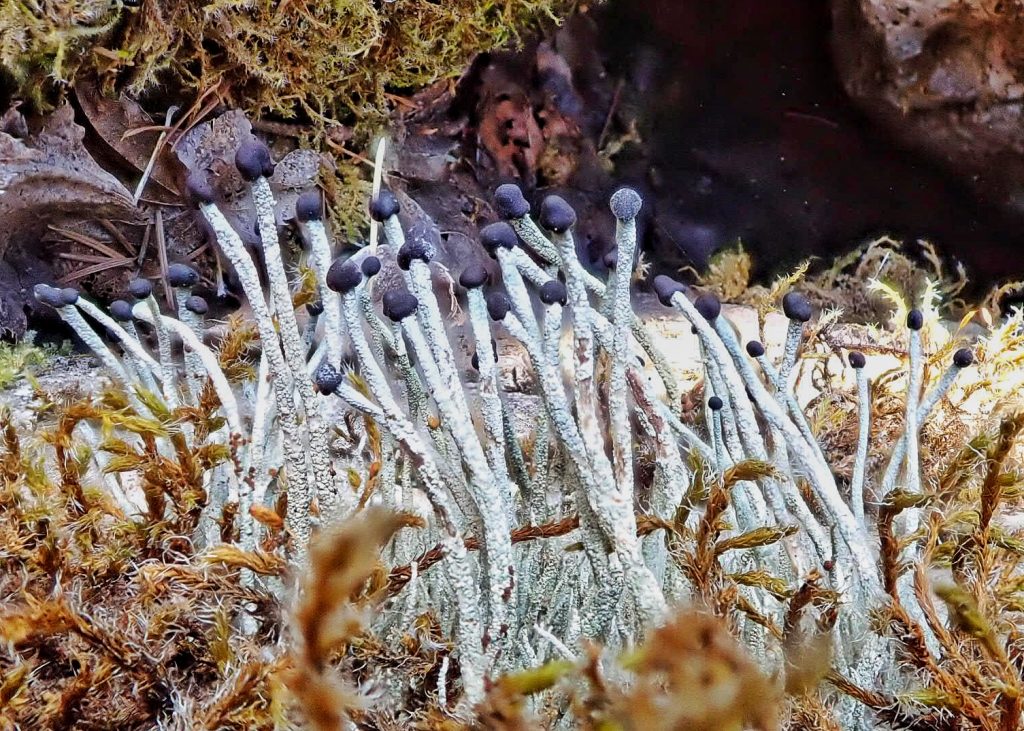
Wow – I just love this! The combination of your personal life history and evolution as a recreational naturalist is wonderful. You are such an excellent writer – you should try submitting this to publishers as a step toward writing an autobiography/natural history journal.
Now I understand why we haven’t heard from you lately!
Thank you Alison! But I really have no ambitions past the goals of my project. The only thing I would like to see is for some smart tech person to make it into a downloadable, updatable app. But thank you very much for your kind words!
Great article Dan! As a semi-self taught lichenologist and one who plays with dragonflies, fairy shrimp, birds, snails, butterflies and native bees, I fully understand most of your experience.
I can see how you would! Thanks Steve!
I work with my neighbors to document the fungi around our road, so I know how much work is going into your pieces. You are doing an amazing job. Whether you document 9,900 more species or just 1, you have opened eyes. Thanks!
Thank you, Ellen!
Wow. What a well done chronicle of your evolution as a recreational naturalist. I enjoyed each paragraph and wished I could have seen the image deck you put together for your presentation. I did a bit more than 3 community college courses, having 16 years of post-high school education, and have immense respect for your skills as a storyteller, writer, naturalist, and especially, this wonderful life purpose project you have undertaken, 10,000 Things of the Pacific Northwest. Bravo!
Thank you!!!
Hi Dan
Far from “boring” your readers, at least this one, the unfolding of your journey into the ways of the naturalist kept me glued to my computer screen start to finish!
One thing though. I’m interested in your repeated reference to the “1 percent naturalist” – a term I introduced in a popular article in Nature Canada back in the 80s I think. Do you know if this term has found its way into general use among naturalists?
Anyhow, I love your project. Don’t ever hesitate to ask for help with the lichen portion of it…
May the forest be with you
Trevor
Thank you! I got the term 1% naturalist from Terry McIntosh, but he’s the only person I’ve heard use it. Obviously it struck a chord with me, and I knew just what he meant.
Thank you for the offer of lichen help! I will definitely take you up on that. My email is recreationalnaturalist@10000thingsofthepnw.com. You can send me yours there. Getting to be lichen season for me!
Wow!
Wow, wow, wow!
I’m always so grateful for the knowledge and passion you share with everyone. Knowing the true cost you’ve paid makes it even more dear.
BTW, we were talking about you on Maple Loop/Heather Pass last week when we were suddenly and unexpectedly caught up in a California Tortoiseshell migration. I find it hard sometimes to get caught up in the wonder of something when I don’t have answers to the what and why and how. It’s like a great meal without dessert. This blog is dessert. Thank you for it.
Thank you, Kat! That is very gratifying to hear. I hope to keep serving an ongoing variety of dessert for a long time!
Dan:
I enjoyed reading your “manifesto” for lack of a better word and I’m glad I helped your, ahem, “addiction” in some small way. Yes, the natural world is an addiction, but it’s better than any drug you could ever ingest! I’ve been there as well. Anyway, love your blog and learn a lot from it. Maybe one day you and Craig will come back to the Olympic Peninsula and we can do some birding, botanizing, bugging, etc. Keep up the good work!
Thanks Vincent! I certainly hope to make it back up there next summer. Maybe I’ll see you then.